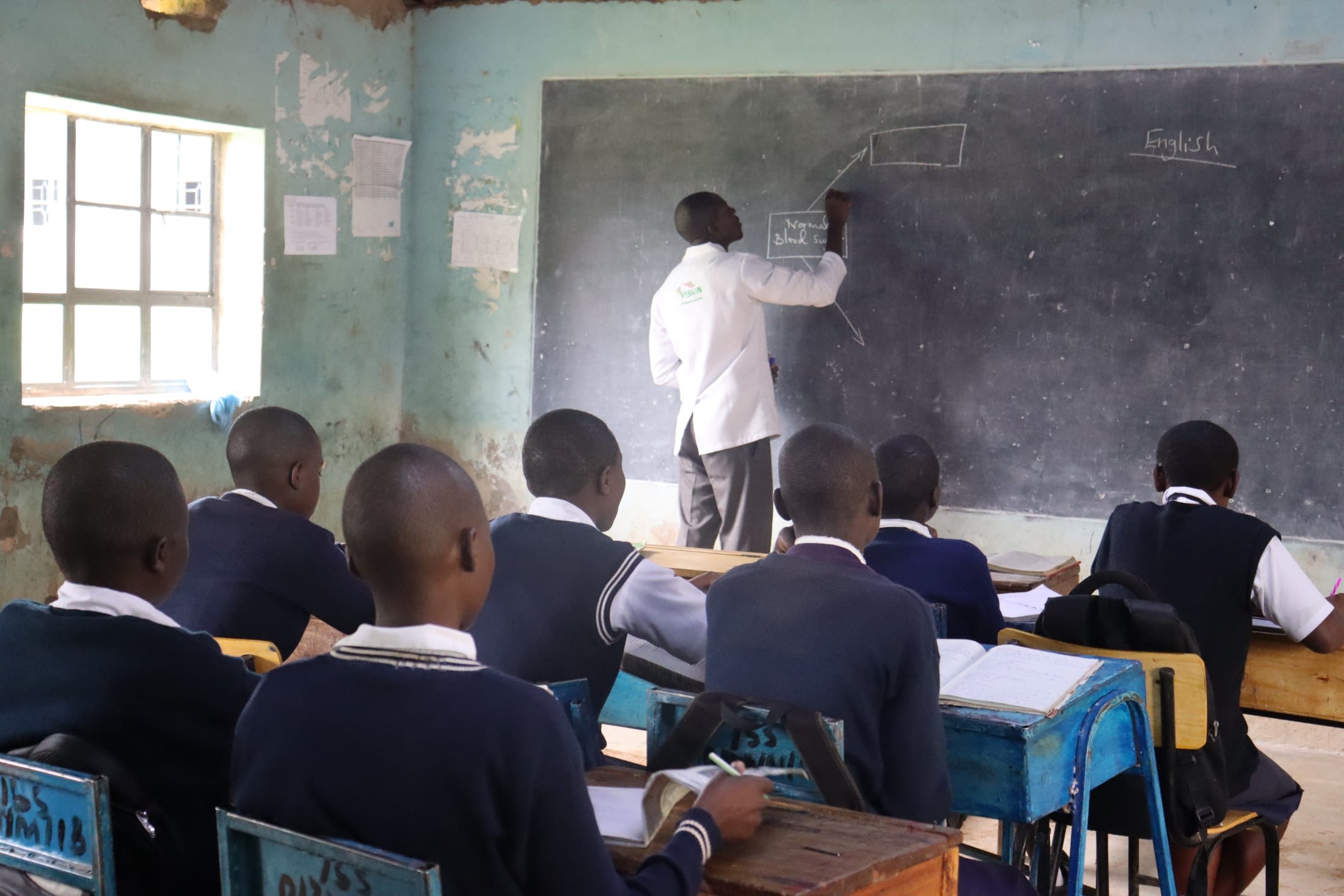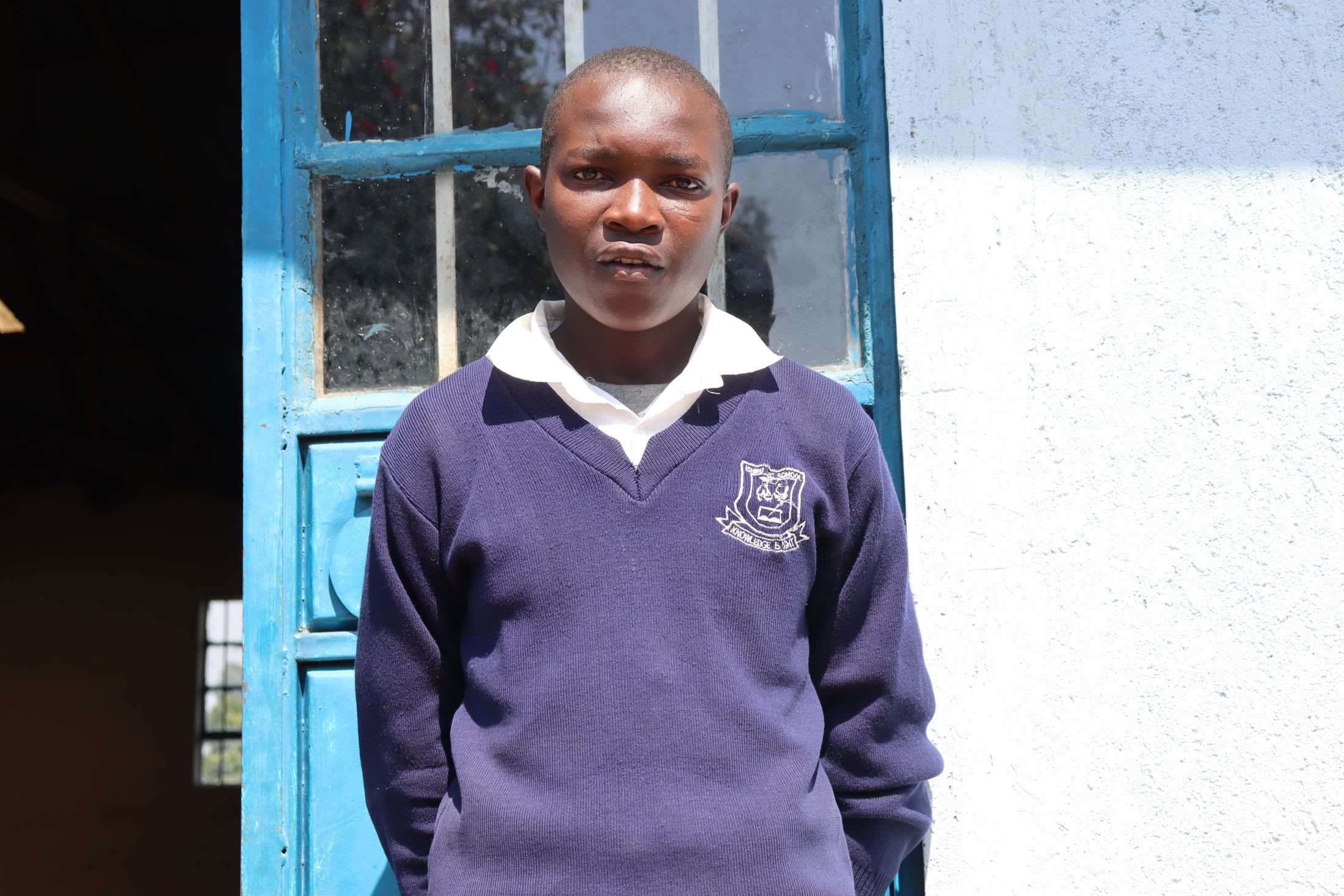The 354 students and 29 staff members of Ishiru Secondary School struggle to access sufficient water to meet their daily needs, especially during the dry seasons when the rain tanks at the school run dry.
"During the long dry seasons, access to water is a big challenge. Therefore, students are forced to bring water from home, which most of the time is contaminated since they carry the water in dirty containers," said field officer Joel Otuya.

"This is dangerous since most of the water brought [from home] is usually contaminated, hence making both students and teachers ill. The illness increases absenteeism in school, making them lag behind in teaching and learning. Food quality is also compromised as a result of using contaminated water brought by students from home. The most commonly reported health consequences are typhoid, diarrhea, flu, and dysentery, which are a result of consuming dirty, contaminated water," continued Joel.
The school sometimes tries to borrow water from neighbors, but they demand payment, and the school can not afford the expense. So, instead, when the water from the tanks and the water students haul from home runs out, there is no choice but for teachers to interrupt the normal routine and send students to a nearby spring to collect water to meet the school's needs.

"I most of the time lose teaching time since the students are usually away fetching water or even due to sicknesses instead of being in class to learn. Due to the low levels of hygiene, classrooms, staffroom, and latrines are very dusty and dirty, putting us at great risk of falling sick," said 48-year-old senior teacher Khayesi Khasi, shown below teaching.

"Both [the] teaching and [the] learning processes are hampered since students have to get water from [the] spring, which is quite a distance from the school," said Joel.
"I waste a lot of time at the spring fetching water during class. This has affected my performance since most of my time is spent fetching water; therefore, I have no time both at home and at school. I'm also at risk whenever we are sent by the teachers to go fetch water such that some community members go ahead and harass us and also abuse us," said 18-year-old Joylynne Khagali, shown below, collecting water from the spring.

The installation of a well will enable students to efficiently collect water outside their classrooms so they can continue learning instead of missing valuable class time. Hopefully, with access to water, students and teachers alike will also experience less water-related illness, and the hygiene standards at the school will improve.
Note: Our proposed water point can only serve 300 people per day. We hope to continue working with this community to identify other water solutions that will ensure all of the people in this community have access to safe and reliable drinking water.
Water at schools is unique, which is why we need unique solutions.
The Proposed Solution, Determined Together...
At The Water Project, everyone has a part in conversations and solutions. We operate in transparency, believing it benefits everyone. We expect reliability from one another as well as our water solutions. Everyone involved makes this possible through hard work and dedication.
In a joint discovery process, community members determine their most advantageous water solution alongside our technical experts. Read more specifics about this solution on the What We're Building tab of this project page. Then, community members lend their support by collecting needed construction materials (sometimes for months ahead of time!), providing labor alongside our artisans, sheltering and feeding the builders, and supplying additional resources.
Water Access for Everyone
This water project is one piece in a large puzzle. In Kenya, Sierra Leone, and Uganda, we're working toward complete coverage of reliable, maintained water sources that guarantee public access now and in the future within a 30-minute round trip for each community, household, school, and health center. One day, we hope to report that this has been achieved!
Training on Health, Hygiene & More
With the community's input, we've identified topics where training will increase positive health outcomes at personal, household, and community levels. We'll coordinate with them to find the best training date. Some examples of what we train communities on are:
- Improved hygiene, health, and sanitation habits
- Safe water handling, storage & treatment
- Disease prevention and proper handwashing
- Income-generation
- Community leadership, governance, & election of a water committee
- Operation and maintenance of the water point
Handwashing Stations
Alongside each water source, we also provide two new gravity-fed handwashing stations that will allow everyone at the school to wash their hands without running water. Handwashing is so important to help prevent future water-related illnesses in the school community.
The student health club will maintain the stations, fill them with water, and supply them with soap (which we will teach the school community how to make during the training!).
VIP Latrines
In addition, we will construct two triple-door Ventilated Improved Pit (VIP) latrine blocks designed to prevent fecal disease transmission. Each latrine will have a cement floor, which is easy to use and clean regularly. Three doors will serve the girls, and three doors will serve the boys.

 Borehole Well and Hand Pump
Borehole Well and Hand Pump
 Rehabilitation Project
Rehabilitation Project





















 We emphasized personal, menstrual, oral, and environmental hygiene. Proper water handling, soap-making, the ten steps of handwashing, and the importance of primary health care were discussed. We covered disease prevention, teen pregnancy, and child rights. Waterpoint, latrine, and handwashing station operation and maintenance, as well as leadership and governance were discussed. By the end of the training, each pupil understood their role in sustaining clean water and good health within their school community.
We emphasized personal, menstrual, oral, and environmental hygiene. Proper water handling, soap-making, the ten steps of handwashing, and the importance of primary health care were discussed. We covered disease prevention, teen pregnancy, and child rights. Waterpoint, latrine, and handwashing station operation and maintenance, as well as leadership and governance were discussed. By the end of the training, each pupil understood their role in sustaining clean water and good health within their school community.










